
Ivan Konstantinovich Aivazovsky Giclée Fine Art Prints 1 of 15
1817-1900
Armenian-Russian Romanticism Painter
The maritime painter Ivan Konstantinovich Aivazovsky emerged from the Armenian community of Feodosia to become one of the most prolific artists of the nineteenth century. Born Hovhannes Aivazian on 29 July 1817 in this Black Sea port, he would transform himself into a figure of considerable consequence within the Russian Imperial art establishment, while maintaining throughout his career an unmistakable attachment to the sea that first shaped his imagination.
His origins speak to the complex cultural geography of the Russian Empire. The son of Konstantin, an Armenian merchant who had migrated from Galicia through various Eastern European territories before settling in Crimea, and Ripsime, a Feodosia Armenian, young Hovhannes received his earliest education at the Armenian Apostolic Church of St. Sargis. The architectural draughtsman Jacob Koch provided initial artistic instruction, recognizing in the boy a facility that would soon attract more significant patronage.
The trajectory from provincial obscurity to metropolitan recognition proceeded with remarkable efficiency. In 1833, following a period in Simferopol under the protection of the Taurida Governor, Aivazovsky entered the Imperial Academy of Arts in St. Petersburg. The landscape class of Maxim Vorobiev provided the formal framework within which his particular vision would develop. By 1837, he had graduated with a gold medal - two years ahead of schedule - having already encountered Alexander Pushkin during the poet's academy visit and participated in Baltic Fleet exercises that would inform his lifelong engagement with naval subjects.
The Academy dispatched him to Europe in 1840, a journey that would prove formative. Venice, with its Armenian Catholic congregation at San Lazzaro degli Armeni where his brother Gabriel resided, offered both artistic stimulation and cultural connection. The Italian sojourn - encompassing Florence, Naples, Rome - constituted what he would later term his "second academy." The validation came swiftly: Pope Gregory XVI bestowed a golden medal, the Louvre exhibited his works, and the Académie royale in Paris added further honors. This was not mere provincial talent seeking metropolitan approval, but an artist whose particular synthesis of Romantic sensibility and maritime observation found ready appreciation across European capitals.
Returning to Russia in 1844 with the title of "official artist of the Russian Navy," Aivazovsky chose to establish himself not in St. Petersburg but in his native Feodosia. This decision - to maintain distance from the shifting currents of metropolitan artistic discourse while remaining deeply embedded in imperial patronage structures - would define both the character and limitations of his subsequent production. The house and studio he built in 1845 became the center of an artistic practice that would yield, by various counts, between 6,000 and 20,000 paintings over six decades.
His personal life reflected the cultural complexities of his position. The 1848 marriage to Julia Graves, an English governess, produced four daughters but ended in divorce in 1877. His second marriage in 1882 to Anna Burnazian, an Armenian widow forty years his junior, represented what he himself characterized as becoming "closer to [his] nation" - a late-life acknowledgment of ethnic identity that had always underlain his cosmopolitan career.
The relationship with imperial power remained consistently productive. Elevated to nobility in 1847, made an Actual Civil Councilor in 1870, and ultimately achieving the rank of full privy councillor in 1896, Aivazovsky navigated the hierarchies of Tsarist recognition with evident skill. Yet this proximity to power did not preclude moments of principled resistance. His response to the Hamidian massacres of 1894-1896 - throwing his Ottoman medals into the sea and producing paintings like "The Armenian Massacres at Trebizond" - demonstrated that ethnic solidarity could override diplomatic convenience.
The assessment of his artistic achievement requires careful calibration. Working primarily from memory rather than direct observation, Aivazovsky developed a method that prioritized emotional effect over documentary precision. The Romantic vocabulary he absorbed during his Italian years remained remarkably stable throughout his career, even as Russian art moved toward Realist concerns. Critics like Vladimir Stasov and Alexandre Benois registered this resistance to stylistic evolution as a limitation, viewing him as increasingly disconnected from the mainstream of Russian artistic development.
Yet such assessments perhaps mistake consistency for stagnation. The silver-toned seascapes of his final decades suggest not exhaustion but refinement, a distillation of effects pursued across thousands of canvases. The sheer productivity - those 55 solo exhibitions, the constant circulation between Russian cities and European capitals, the steady stream of imperial commissions - speaks to an artist who had found his subject and method early and pursued their possibilities with remarkable single-mindedness.
Aivazovsky's death on 2 May 1900 in Feodosia closed a career that had spanned from the age of Pushkin to the threshold of modernism. Buried at St. Sargis Church with an inscription from Movses Khorenatsi - "Born as a mortal, left the immortal memory of himself" - he remains a figure whose significance extends beyond the aesthetic into the cultural and political complexities of nineteenth-century imperial space. The painter of waters had navigated currents both artistic and ideological with a sure hand, creating a body of work whose very conventionality within Romantic maritime tradition became, paradoxically, its most distinctive feature.
His origins speak to the complex cultural geography of the Russian Empire. The son of Konstantin, an Armenian merchant who had migrated from Galicia through various Eastern European territories before settling in Crimea, and Ripsime, a Feodosia Armenian, young Hovhannes received his earliest education at the Armenian Apostolic Church of St. Sargis. The architectural draughtsman Jacob Koch provided initial artistic instruction, recognizing in the boy a facility that would soon attract more significant patronage.
The trajectory from provincial obscurity to metropolitan recognition proceeded with remarkable efficiency. In 1833, following a period in Simferopol under the protection of the Taurida Governor, Aivazovsky entered the Imperial Academy of Arts in St. Petersburg. The landscape class of Maxim Vorobiev provided the formal framework within which his particular vision would develop. By 1837, he had graduated with a gold medal - two years ahead of schedule - having already encountered Alexander Pushkin during the poet's academy visit and participated in Baltic Fleet exercises that would inform his lifelong engagement with naval subjects.
The Academy dispatched him to Europe in 1840, a journey that would prove formative. Venice, with its Armenian Catholic congregation at San Lazzaro degli Armeni where his brother Gabriel resided, offered both artistic stimulation and cultural connection. The Italian sojourn - encompassing Florence, Naples, Rome - constituted what he would later term his "second academy." The validation came swiftly: Pope Gregory XVI bestowed a golden medal, the Louvre exhibited his works, and the Académie royale in Paris added further honors. This was not mere provincial talent seeking metropolitan approval, but an artist whose particular synthesis of Romantic sensibility and maritime observation found ready appreciation across European capitals.
Returning to Russia in 1844 with the title of "official artist of the Russian Navy," Aivazovsky chose to establish himself not in St. Petersburg but in his native Feodosia. This decision - to maintain distance from the shifting currents of metropolitan artistic discourse while remaining deeply embedded in imperial patronage structures - would define both the character and limitations of his subsequent production. The house and studio he built in 1845 became the center of an artistic practice that would yield, by various counts, between 6,000 and 20,000 paintings over six decades.
His personal life reflected the cultural complexities of his position. The 1848 marriage to Julia Graves, an English governess, produced four daughters but ended in divorce in 1877. His second marriage in 1882 to Anna Burnazian, an Armenian widow forty years his junior, represented what he himself characterized as becoming "closer to [his] nation" - a late-life acknowledgment of ethnic identity that had always underlain his cosmopolitan career.
The relationship with imperial power remained consistently productive. Elevated to nobility in 1847, made an Actual Civil Councilor in 1870, and ultimately achieving the rank of full privy councillor in 1896, Aivazovsky navigated the hierarchies of Tsarist recognition with evident skill. Yet this proximity to power did not preclude moments of principled resistance. His response to the Hamidian massacres of 1894-1896 - throwing his Ottoman medals into the sea and producing paintings like "The Armenian Massacres at Trebizond" - demonstrated that ethnic solidarity could override diplomatic convenience.
The assessment of his artistic achievement requires careful calibration. Working primarily from memory rather than direct observation, Aivazovsky developed a method that prioritized emotional effect over documentary precision. The Romantic vocabulary he absorbed during his Italian years remained remarkably stable throughout his career, even as Russian art moved toward Realist concerns. Critics like Vladimir Stasov and Alexandre Benois registered this resistance to stylistic evolution as a limitation, viewing him as increasingly disconnected from the mainstream of Russian artistic development.
Yet such assessments perhaps mistake consistency for stagnation. The silver-toned seascapes of his final decades suggest not exhaustion but refinement, a distillation of effects pursued across thousands of canvases. The sheer productivity - those 55 solo exhibitions, the constant circulation between Russian cities and European capitals, the steady stream of imperial commissions - speaks to an artist who had found his subject and method early and pursued their possibilities with remarkable single-mindedness.
Aivazovsky's death on 2 May 1900 in Feodosia closed a career that had spanned from the age of Pushkin to the threshold of modernism. Buried at St. Sargis Church with an inscription from Movses Khorenatsi - "Born as a mortal, left the immortal memory of himself" - he remains a figure whose significance extends beyond the aesthetic into the cultural and political complexities of nineteenth-century imperial space. The painter of waters had navigated currents both artistic and ideological with a sure hand, creating a body of work whose very conventionality within Romantic maritime tradition became, paradoxically, its most distinctive feature.
337 Aivazovsky Artworks
Page 1 of 15
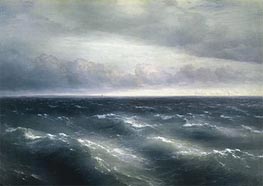
Giclée Canvas Print
$99.71
$99.71
SKU: 12-AYV
Ivan Konstantinovich Aivazovsky
Original Size:149 x 208 cm
The Tretyakov Gallery, Moscow, Russia
Ivan Konstantinovich Aivazovsky
Original Size:149 x 208 cm
The Tretyakov Gallery, Moscow, Russia
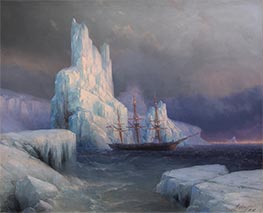
Giclée Canvas Print
$68.63
$68.63
SKU: 13-AYV
Ivan Konstantinovich Aivazovsky
Original Size:112 x 136 cm
I. K. Aivazovsky Museum, Feodosia, Ukraine
Ivan Konstantinovich Aivazovsky
Original Size:112 x 136 cm
I. K. Aivazovsky Museum, Feodosia, Ukraine
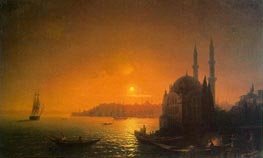
Giclée Canvas Print
$55.83
$55.83
SKU: 15-AYV
Ivan Konstantinovich Aivazovsky
Original Size:124 x 192 cm
State Russian Museum, St. Petersburg, Russia
Ivan Konstantinovich Aivazovsky
Original Size:124 x 192 cm
State Russian Museum, St. Petersburg, Russia
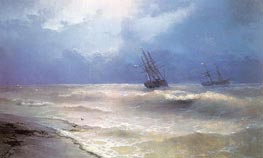
Giclée Canvas Print
$55.83
$55.83
SKU: 16-AYV
Ivan Konstantinovich Aivazovsky
Original Size:130 x 217 cm
I. K. Aivazovsky Museum, Feodosia, Ukraine
Ivan Konstantinovich Aivazovsky
Original Size:130 x 217 cm
I. K. Aivazovsky Museum, Feodosia, Ukraine
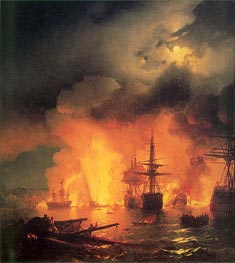
Giclée Canvas Print
$80.01
$80.01
SKU: 14-AYV
Ivan Konstantinovich Aivazovsky
Original Size:193 x 183 cm
I. K. Aivazovsky Museum, Feodosia, Ukraine
Ivan Konstantinovich Aivazovsky
Original Size:193 x 183 cm
I. K. Aivazovsky Museum, Feodosia, Ukraine

Giclée Canvas Print
$56.31
$56.31
SKU: 10-AYV
Ivan Konstantinovich Aivazovsky
Original Size:221 x 332 cm
State Russian Museum, St. Petersburg, Russia
Ivan Konstantinovich Aivazovsky
Original Size:221 x 332 cm
State Russian Museum, St. Petersburg, Russia
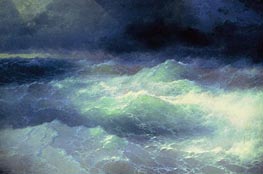
Giclée Canvas Print
$69.11
$69.11
SKU: 11-AYV
Ivan Konstantinovich Aivazovsky
Original Size:285 x 429 cm
I. K. Aivazovsky Museum, Feodosia, Ukraine
Ivan Konstantinovich Aivazovsky
Original Size:285 x 429 cm
I. K. Aivazovsky Museum, Feodosia, Ukraine
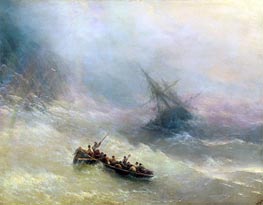
Giclée Canvas Print
$65.70
$65.70
SKU: 17-AYV
Ivan Konstantinovich Aivazovsky
Original Size:102 x 132 cm
The Tretyakov Gallery, Moscow, Russia
Ivan Konstantinovich Aivazovsky
Original Size:102 x 132 cm
The Tretyakov Gallery, Moscow, Russia
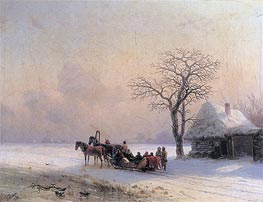
Giclée Canvas Print
$55.83
$55.83
SKU: 5800-AYV
Ivan Konstantinovich Aivazovsky
Original Size:36 x 45.5 cm
Private Collection
Ivan Konstantinovich Aivazovsky
Original Size:36 x 45.5 cm
Private Collection
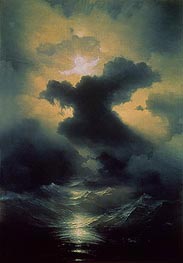
Giclée Canvas Print
$59.08
$59.08
SKU: 34-AYV
Ivan Konstantinovich Aivazovsky
Original Size:106 x 75 cm
Museum of Armenian Congregation of Mhitarists, Venice, Italy
Ivan Konstantinovich Aivazovsky
Original Size:106 x 75 cm
Museum of Armenian Congregation of Mhitarists, Venice, Italy
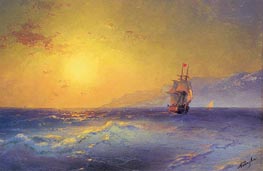
Giclée Canvas Print
$55.83
$55.83
SKU: 40-AYV
Ivan Konstantinovich Aivazovsky
Original Size:36 x 55 cm
The Tretyakov Gallery, Moscow, Russia
Ivan Konstantinovich Aivazovsky
Original Size:36 x 55 cm
The Tretyakov Gallery, Moscow, Russia
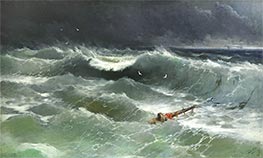
Giclée Canvas Print
$55.83
$55.83
SKU: 18464-AYV
Ivan Konstantinovich Aivazovsky
Original Size:55 x 92 cm
The Yaroslavl Art Museum, Yaroslavl, Russia
Ivan Konstantinovich Aivazovsky
Original Size:55 x 92 cm
The Yaroslavl Art Museum, Yaroslavl, Russia
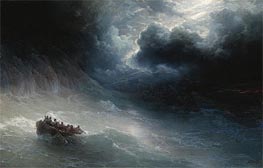
Giclée Canvas Print
$66.55
$66.55
SKU: 9645-AYV
Ivan Konstantinovich Aivazovsky
Original Size:70 x 110 cm
Private Collection
Ivan Konstantinovich Aivazovsky
Original Size:70 x 110 cm
Private Collection

Giclée Canvas Print
$55.83
$55.83
SKU: 9651-AYV
Ivan Konstantinovich Aivazovsky
Original Size:212 x 339 cm
I. K. Aivazovsky Museum, Feodosia, Ukraine
Ivan Konstantinovich Aivazovsky
Original Size:212 x 339 cm
I. K. Aivazovsky Museum, Feodosia, Ukraine
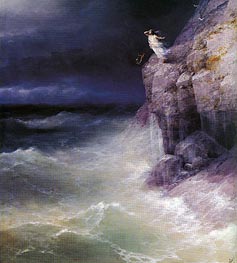
Giclée Canvas Print
$99.55
$99.55
SKU: 9699-AYV
Ivan Konstantinovich Aivazovsky
Original Size:165 x 125 cm
Private Collection
Ivan Konstantinovich Aivazovsky
Original Size:165 x 125 cm
Private Collection
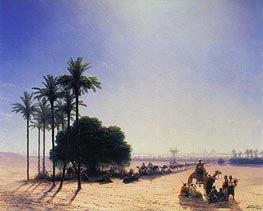
Giclée Canvas Print
$55.95
$55.95
SKU: 5657-AYV
Ivan Konstantinovich Aivazovsky
Original Size:75 x 92 cm
Private Collection
Ivan Konstantinovich Aivazovsky
Original Size:75 x 92 cm
Private Collection
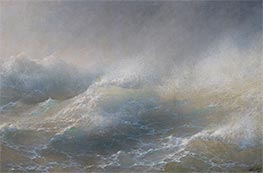
Giclée Canvas Print
$55.83
$55.83
SKU: 18487-AYV
Ivan Konstantinovich Aivazovsky
Original Size:100 x 155 cm
Public Collection
Ivan Konstantinovich Aivazovsky
Original Size:100 x 155 cm
Public Collection
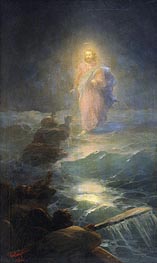
Giclée Canvas Print
$55.83
$55.83
SKU: 9655-AYV
Ivan Konstantinovich Aivazovsky
Original Size:unknown
State Museum of History of Religion, St. Petersburg, Russia
Ivan Konstantinovich Aivazovsky
Original Size:unknown
State Museum of History of Religion, St. Petersburg, Russia
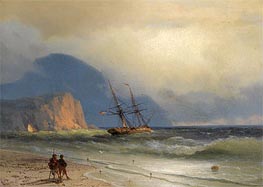
Giclée Canvas Print
$55.83
$55.83
SKU: 9665-AYV
Ivan Konstantinovich Aivazovsky
Original Size:26 x 35 cm
Private Collection
Ivan Konstantinovich Aivazovsky
Original Size:26 x 35 cm
Private Collection
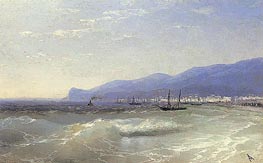
Giclée Canvas Print
$55.83
$55.83
SKU: 3828-AYV
Ivan Konstantinovich Aivazovsky
Original Size:16 x 26 cm
Private Collection
Ivan Konstantinovich Aivazovsky
Original Size:16 x 26 cm
Private Collection
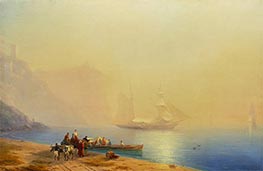
Giclée Canvas Print
$55.83
$55.83
SKU: 5790-AYV
Ivan Konstantinovich Aivazovsky
Original Size:96 x 146 cm
State Russian Museum, St. Petersburg, Russia
Ivan Konstantinovich Aivazovsky
Original Size:96 x 146 cm
State Russian Museum, St. Petersburg, Russia
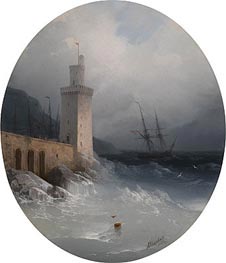
Giclée Canvas Print
$55.83
$55.83
SKU: 11927-AYV
Ivan Konstantinovich Aivazovsky
Original Size:33 x 28 cm
Private Collection
Ivan Konstantinovich Aivazovsky
Original Size:33 x 28 cm
Private Collection
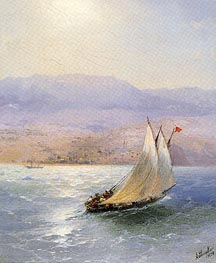
Giclée Canvas Print
$55.83
$55.83
SKU: 9704-AYV
Ivan Konstantinovich Aivazovsky
Original Size:32.5 x 27 cm
Private Collection
Ivan Konstantinovich Aivazovsky
Original Size:32.5 x 27 cm
Private Collection
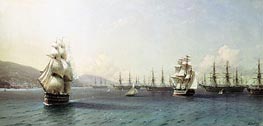
Giclée Canvas Print
$55.83
$55.83
SKU: 3766-AYV
Ivan Konstantinovich Aivazovsky
Original Size:53 x 107 cm
I. K. Aivazovsky Museum, Feodosia, Ukraine
Ivan Konstantinovich Aivazovsky
Original Size:53 x 107 cm
I. K. Aivazovsky Museum, Feodosia, Ukraine